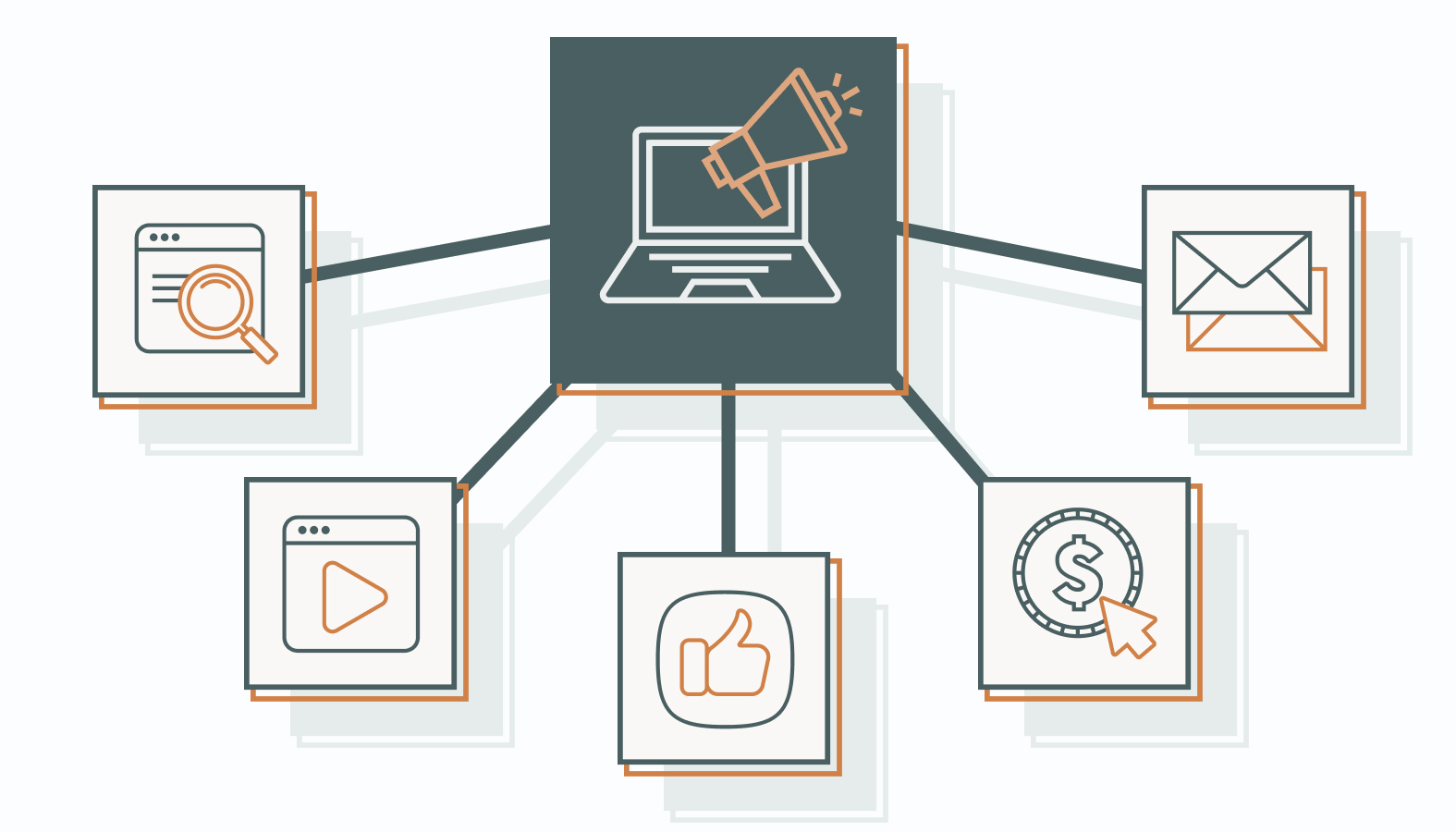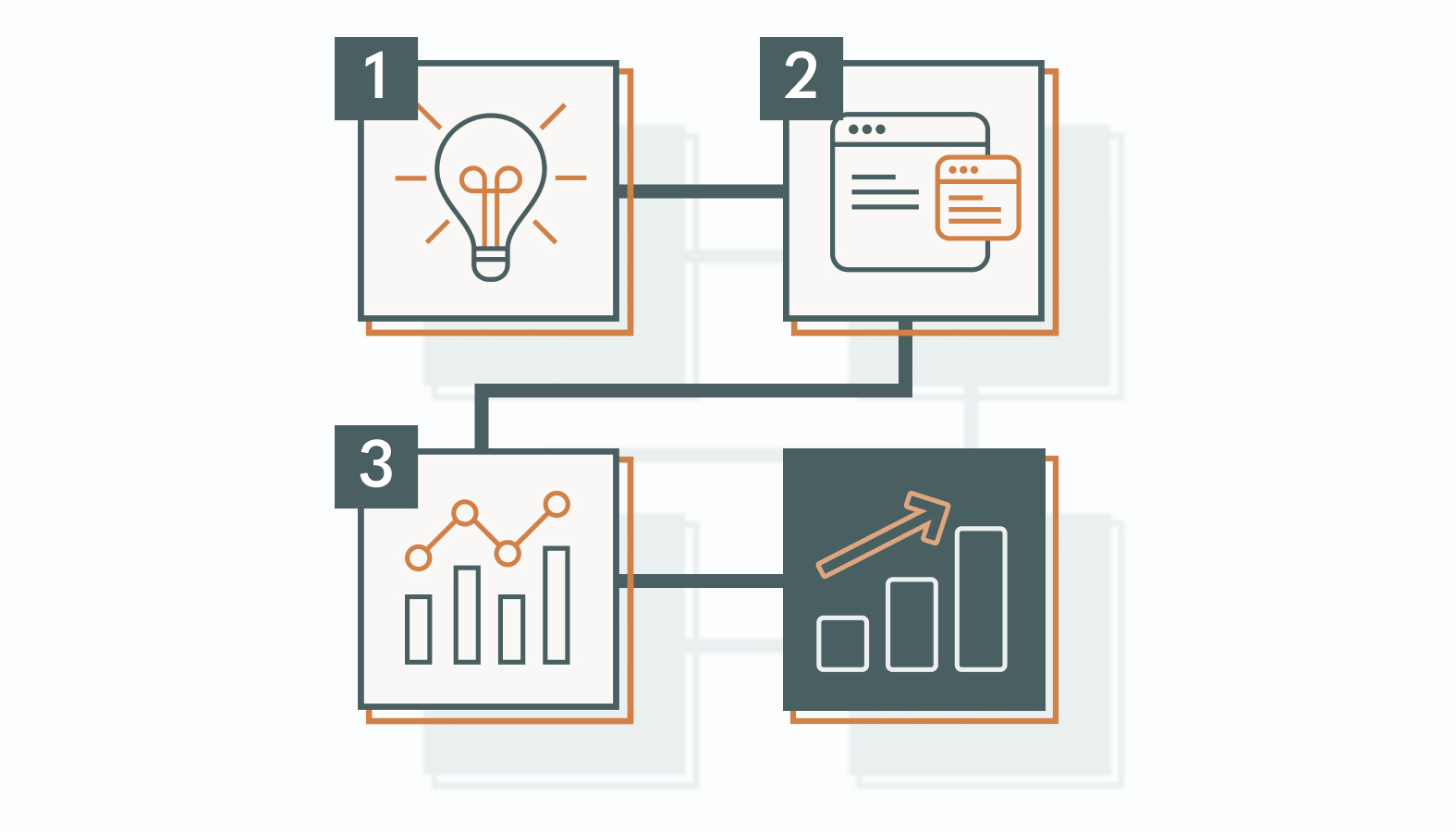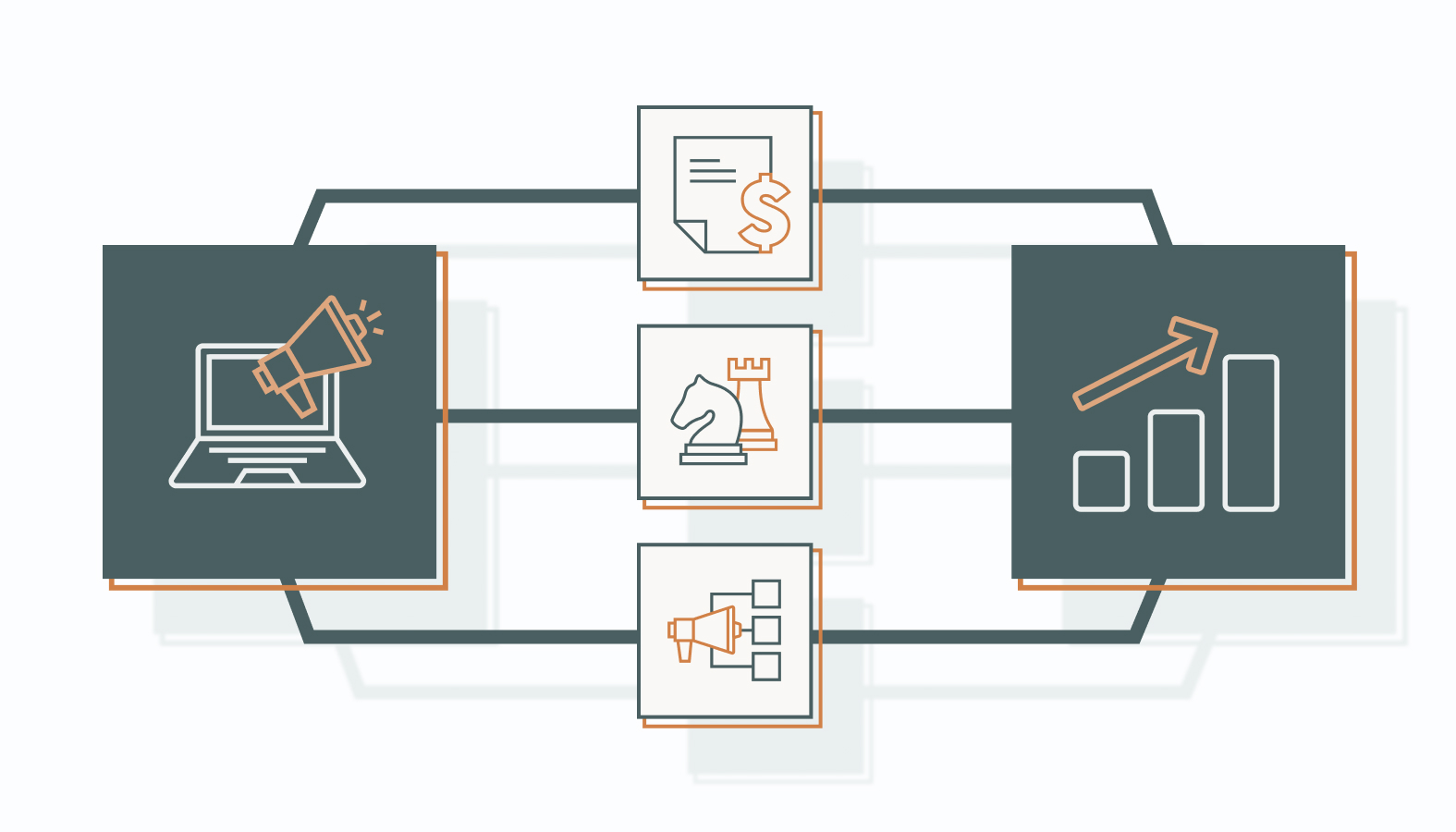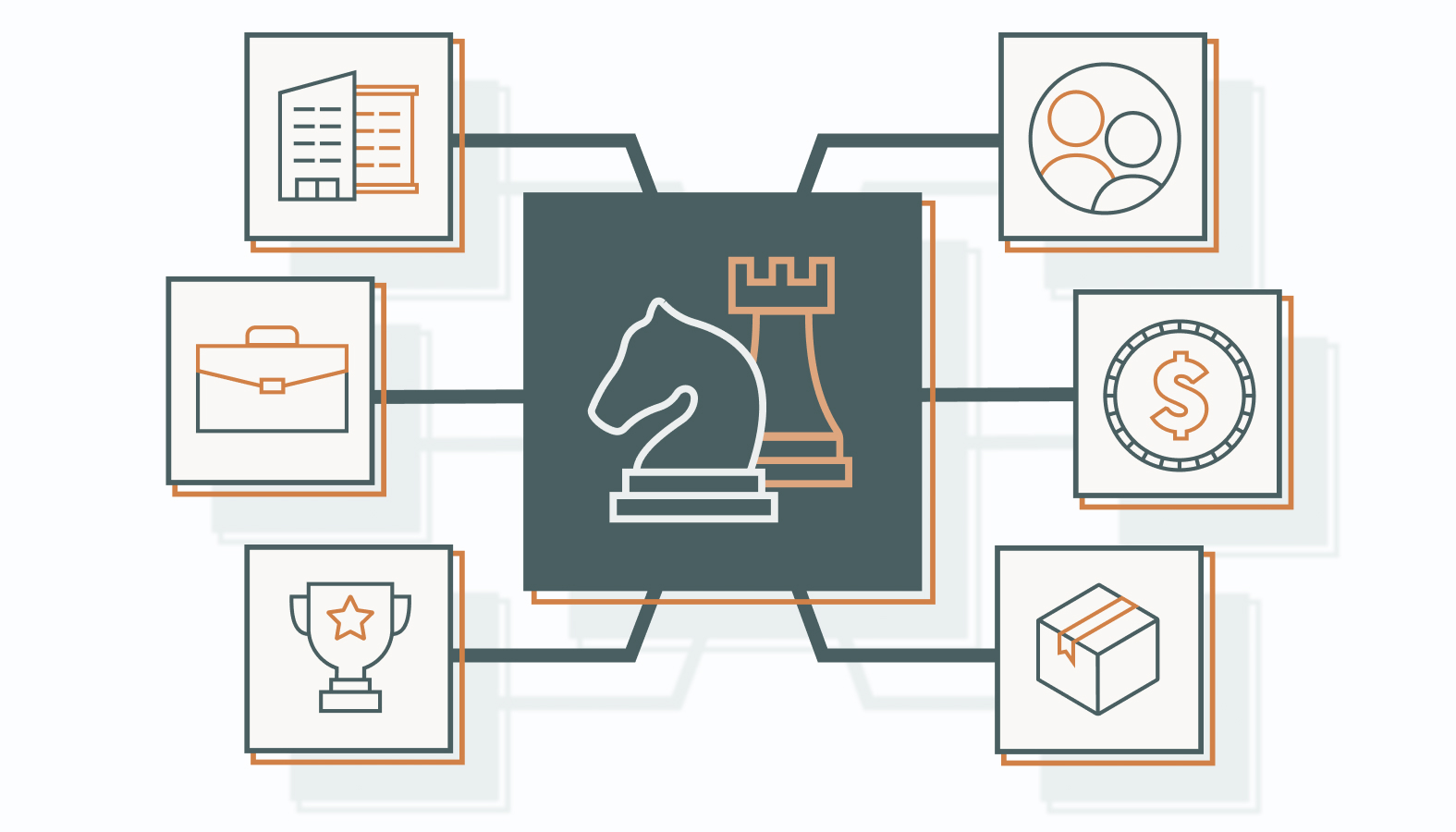The online space is fiercely competitive.
Forget just getting clicks and likes.
You need a strategy that nurtures the initial sparks of customer engagement into a loyal brand following.
This is where growth marketing comes in.
Growth marketing unlocks the next phase. It focuses on laser-sharp accuracy, ensuring the right message reaches the ideal audience at the exact right time. It nurtures that connection into a long-lasting relationship.
As we break down the strategic elements of digital and growth marketing, we’ll reveal which is better for explosive business growth.
The Essence of Digital Marketing
Picture a bazaar overflowing with shouting vendors–that’s today’s online marketplace.
You need marketing mastery to rise above the noise and steer your business into the digital-first world.
Key Components of Digital Marketing
Mastering the basics, such as SEO, content marketing, PPC, and email marketing, helps you connect with your audience and drive business growth.
Search Engine Optimization (SEO)
SEO makes it easier for potential customers to find your website. It’s an ever-evolving process–a continuous effort to improve your website’s visibility in search engines.
You can maintain strong search engine rankings and attract a loyal audience by:
- consistently refining your website with relevant content,
- using up-to-date technical SEO best practices,
- building a user-centric and SEO-friendly website design.
Ongoing SEO optimization leads to more qualified traffic and, hopefully, outranking competitors.
Content Marketing
Content fuels SEO through compelling stories.
Content marketing involves crafting valuable and relevant stories in various formats, such as blog posts, articles, infographics, videos, or interactive elements. You can create a mix of these formats that inform, educate, or entertain.
It also incorporates strategic SEO practices. Using relevant keywords and optimizing your content for search engines increases discoverability and attracts qualified visitors genuinely interested in your brand and offerings.
Social Media Marketing
Ditch outdated tactics; embrace social media’s marketing power.
Through engaging content, interactive polls, and live chats, you can spark conversations, answer questions, and build relationships directly with your customers. It fosters a sense of community where brand advocates can connect and share their experiences.
You can encourage repeat business and promote positive word-of-mouth marketing with an effective social media presence.
Pay-Per-Click Advertising
Pay-per-click (PPC) advertising delivers high-intent traffic through laser-focused targeting. Leverage demographics, interests, and online behavior to put your ads directly in front of users actively searching for your offerings.
Using compelling ad copy and strategic keyword bids ensures top placement in relevant searches. This targeted approach attracts qualified leads who are more likely to convert.
Plus, unlike traditional advertising, you only pay when a user clicks your ad, making it a cost-effective way to drive qualified traffic to your website and generate leads.
The beauty of PPC lies in its measurability. It provides real-time tracking of clicks, conversions, and performance, allowing you to optimize your campaigns for maximum impact.
Email Marketing
Don’t underestimate the power of a well-crafted email. It’s a direct line to nurture leads, build relationships, and convert them into loyal customers.
It’s a budget-friendly yet highly effective way to connect with your audience throughout their journey with your brand. Personalized emails keep them engaged and informed from the moment they discover your company to the point of purchase and beyond.
Assessing Digital Marketing’s ROI
Digital marketing is about results, and the ultimate scorecard is ROI (return on investment). Think of it like your marketing report card – the higher the ROI, the better your campaigns are performing.
But how do you measure that success?
Here’s where metrics like click-through rates (how many people click your ads), conversion rates (how many clicks turn into sales), and cost per acquisition (how much it costs to acquire a new customer) come into play.
These metrics reveal what’s working and what’s not, allowing you to constantly optimize your marketing efforts for maximum impact.
Unveiling Growth Marketing
Growth marketing is like rocket fuel for your business. It goes beyond just getting new customers; it’s about keeping them engaged and returning for more.
Growth marketing keeps pace with how your customers behave by constantly testing and tweaking things based on data.
The Scientific Approach of Growth Marketing
Growth marketers love experimentation and typically use this 3-step recipe for explosive growth:
1. Hypothesis Generation
Growth marketing thrives on informed hunches, not blind leaps of faith. It all starts with data.
Growth marketers are data detectives, meticulously analyzing website behavior, customer journeys, and market trends. They also listen intently to customer feedback, noting what resonates and frustrations linger.
Combining this intel, they form data-driven hypotheses – educated guesses – about what will drive growth.
2. Testing
But growth marketing isn’t just about good guesses; it’s about validating them rigorously. Here’s where A/B testing and advanced experiments come into play.
Let’s say you’re crafting your website’s perfect call to action (CTA). With A/B testing, you can create two variations, each with slightly different wording or button colors. Then, you track which version gets more clicks. This isolates the impact of that specific element (the CTA wording or color) and reveals which one drives more visitors to take action.
By running multiple A/B tests and experiments across different marketing channels, you can refine your entire strategy for growth.
It’s a continuous learning process that helps you identify what resonates most with your audience, which leads to faster user acquisition and higher customer engagement.
3. Analysis and Iteration
After testing comes analysis, where marketers dissect the data and learn from test results.
Growth is all about iteration. Every experiment, successful or not, informs the next round. It’s a continuous cycle of hypothesizing, testing, analyzing, and refining – the engine for sustained growth.
Evaluating Growth Marketing ROI
Unlike traditional digital marketing, which is focused on immediate results, growth marketing prioritizes long-term value. It looks beyond the initial sale, considering customer lifetime value (LTV) and the cumulative impact of optimizations across the customer journey.
Growth marketers use more data to create a long-term business growth plan and consider the bigger picture to measure ROI.
Digital vs. Growth Marketing: Core Differences Uncovered
Imagine digital marketing as building a bridge. You attract attention with eye-catching signs (ads) and entice people to walk across (click-through rates). Your goal is to get them to the other side (conversions, sign-ups).
Digital marketing is effective, but what happens after they cross?
Growth marketing takes over there. It focuses on the entire journey across the bridge:
- the quality of the walkway (user experience),
- the helpful guides along the way (customer support), and
- the enticing destination (loyalty programs).
Growth marketers aim to get people across the bridge, keep them coming back for more, and have them sing your praises (brand advocacy).
Which Delivers More ROI?
Understanding the ROI of each approach empowers targeted marketing decisions.
- Digital Marketing: Ideal for immediate goals like brand awareness or lead generation. It is easy to measure (ad spend vs. revenue), delivers quick results, and aligns with short-term objectives. However, it may not translate to long-term loyalty or growth.
- Growth Marketing: Perfect for building a loyal customer base and achieving long-term success. It fosters sustainable growth, optimizes customer journeys, and builds brand advocates. However, ROI takes longer and requires continuous testing.
Startups often begin with digital marketing to establish a brand presence. Maturing companies incorporate growth marketing to cultivate customer loyalty and drive innovation.
Customized Strategy for Your Business
The best approach depends on your business goals and resources.
Need a quick traffic surge? A digital marketing blitz might be ideal. But for long-term loyalty, growth marketing reigns supreme. However, a high-performing digital campaign uses both as valuable tools. One captures leads, while the other converts them into brand advocates.
The ultimate goal? A marketing strategy that crushes current goals while laying the foundation for future success.
Growth Marketing and Digital Marketing Synergy
The fusion of digital and growth marketing creates a marketing force to be reckoned with.
Growth marketing takes proven tactics–like email marketing–to the next level. It continuously tests, segments, and personalizes these tactics to maximize conversions and retention.
Data captured from online campaigns fuels this growth, unlocking innovative approaches that outrun the competition.
This powerful fusion tackles immediate needs (i.e., brand awareness and leads) while building a loyal customer base for future growth.
Factors to Consider When Choosing Your Strategy
There’s no magic bullet in marketing, but a one-size-fits-all approach often yields mediocre results.
Your success relies on a tailored marketing strategy based on your resources, goals, and specific situations. Here’s why:
Business Size
Business size dictates marketing strategy.
Startups benefit from cost-effective digital tools like social media to build online presence.
Larger companies can explore advanced analytics and automation for customer engagement at scale.
Industry Type
Marketing tactics can vary depending on the industry a company is in.
B2B (business-to-business) companies leverage professional platforms like LinkedIn, while B2C (business-to-consumer) brands thrive on Instagram’s visual engagement and influencer marketing.
Don’t forget that industry regulations – healthcare and finance, for example- have stricter marketing guidelines.
The competitive landscape also plays a role. Saturated markets demand that you stand out from the crowd. Growth marketing’s strength lies in its focus on experimentation, which gives your business a crucial edge.
Marketing Goals
Clear marketing goals drive strategy.
Consider how these tactics affect your current goals:
- Digital marketing delivers quick wins like brand awareness and lead generation. It’s ideal for market entry.
- Growth marketing fosters long-term user engagement and retention. It’s best for building customer loyalty.
Customer Cycle
The customer journey is your roadmap to achieving business goals.
Marketing tactics and messages adapt across awareness, consideration, decision, and post-purchase stages.
Digital marketing shines at grabbing attention (awareness & consideration).
Growth marketing guides customers through decision-making and builds loyalty (post-purchase).
Available Resources
Your marketing engine runs on resources. Budget, personnel, and technology define your campaign’s reach and complexity.
Startups can start with essential digital marketing strategies, scaling to growth marketing as resources allow.
Companies with ample resources can hit the ground running with comprehensive growth strategies, deploying a mix of easy-to-implement tactics to complex, data-driven approaches.
Product or Service Complexity
Product complexity steers your strategy. Simple products or services win with clear digital marketing.
Complex products and services require growth marketing’s nurturing approach to educate and build trust for long-term conversions.
An effective marketing plan considers your business size, industry, goals, customer journey, resources, and product.
The Future is Integrated: Blending Growth and Digital Marketing
Success lies in combining digital marketing and growth marketing.
Businesses want both quick wins and customers who stick around forever. Integrated marketing is the secret sauce, combining digital marketing’s reach with growth marketing’s focus on what customers really want.
It’s like a one-stop shop for attracting and keeping fans across all channels, with personalized stories and data-driven campaigns that hit the bullseye.
Picture this: laser-focused ads fueled by accurate info, helping you make better choices with your marketing budget.
The Winning Formula for Agile Marketing
Unleash marketing agility with these three elements:
- Break down marketing silos.
- Foster collaboration.
- Invest in continuous learning for your team.
These agile, insight-driven brands will not only predict market shifts but shape them, too.
The future of marketing relies on the powerful duo: growth and digital marketing.
Embrace Both for Real Growth
Digital marketing ignites immediate reach, while growth marketing optimizes the customer journey for lasting success.
Forget picking favorites – these strategies are a dream team. Together, they create agility, responsiveness, and measurable growth.
Think of it as building an unstoppable, resilient brand—constantly learning and growing, ready to crush it no matter what comes your way.
Navigating Your Marketing Strategy: Let’s Talk
Struggling to optimize your marketing for sustainable results? We can help.
At Agency, we break down complex strategies like growth and digital marketing into clear, actionable plans tailored to your business.
Let’s chat – no pressure, just a candid conversation to understand your unique challenges and goals. >> Our experts will map out a clear, focused marketing plan that gets you moving forward and propels your business growth. No obligations, just results.










